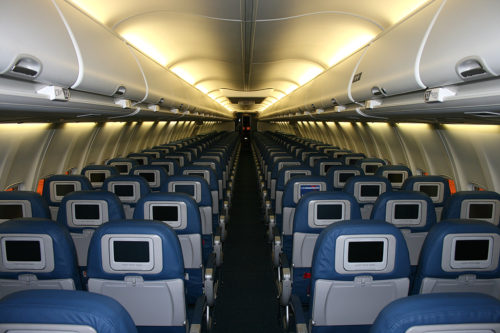In economics, one of the most famous examples of price discrimination is airfare. Everyone in the same cabin is getting essentially the same product, but almost everyone paid a different price. So how do airlines decide how much your airfare should be? CNN talked to Robert W. Mann, a former airline planning executive.

Delta Air Lines 737-800. Photo by Cweyer, used with permission.
Passenger Profiling
In the interview, Mann spoke about a few different factors that airlines use to decide the airfare, and when to charge what airfare. First and foremost, airlines try their best to profile the passengers on a given flight. We’re not talking about race, gender, etc., but more about the type of market a certain route falls under.
For example, Hawaii is a largely leisure market, and leisure travelers tend to book flights much earlier, say, a few months out. Airlines can strategically charge the highest during that window. On the other hand, flights that have desirable times for business travelers might attract consultants, many of which have a set schedule and many of them also buy last-minute tickets. Airlines can do the opposite—charging a higher fare a week or so leading up to departure.
Avoid Undermining the Brand
Part of the goal of an airline is to fill every single seat, in the most efficient way possible. You’d think that means airlines should keep lowering their price until the minute before departure, so that they could have a 100% passenger load, all the time.
But airline also has a brand to protect. For example, the big three legacy airlines offer their top-tier elites unlimited upgrades to First Class. They would rather make money from these First Class seats—on paper, even a coach passenger paying $1 extra is better than a seat being empty or given away as a free upgrade. Of course, this is not accounting for the opportunity cost of not upgrading an elite, who might reward the airline with more spending in the future if s/he gets an upgrade.
Similarly, airlines could offer someone a $5 ticket to a seat in Coach that would otherwise go empty. However, airlines also don’t want to “cheapen” their brand, which is why there is a limit to which they will discount their seats.
Staying Competitive
Cathay Pacific sometimes charges more to fly New York to Hong Kong, than to fly New York-Hong Kong-Taipei. I used to not understand this—doesn’t adding one flight add to the cost to the airline, and should lead to a higher airfare?
The truth is, many consumers are ultra price sensitive. They may go for an itinerary with a connection if it’s cheaper than flying direct. Cathay Pacific might very well be competing with EVA Air or China Airlines on the New York-Taipei route. Where EVA and China Airlines offer a direct flight, Cathay Pacific offers a connection. As a result, Cathay might have to offer it cheaper in order to attract customers.
This of course, leads to hidden city ticketing. This is when passengers book a flight, A-B-C, even they are terminating point B, because the A-B-C flight is cheaper than the A-B flight. Airlines understandably dislike this, though the practice is still alive and well.
Conclusion
There are tons of tools an airline utilize to figure out what price to charge, and these are just a few considerations. The economics of airfares and revenue management for airlines are fascinating, and you can read more about the article on CNN’s website.
The responses below are not provided or commissioned by the bank advertiser. Responses have not been reviewed, approved or otherwise endorsed by the bank advertiser. It is not the bank advertiser's responsibility to ensure all posts and/or questions are answered.